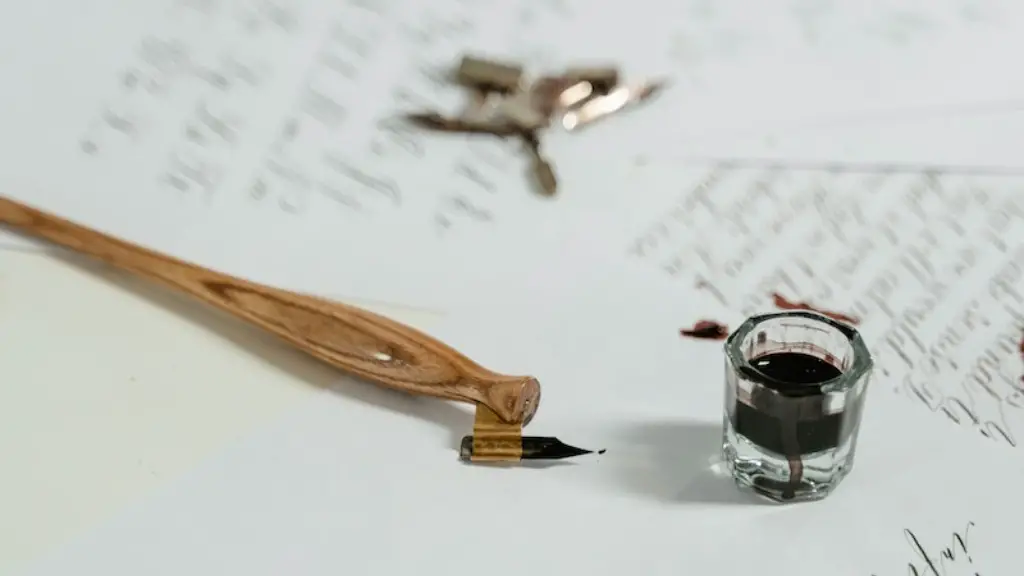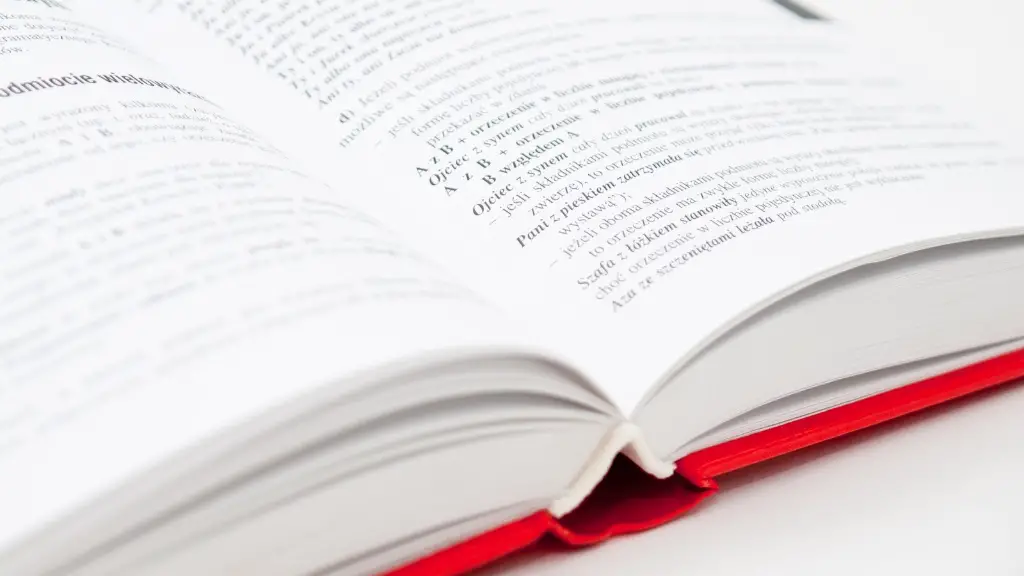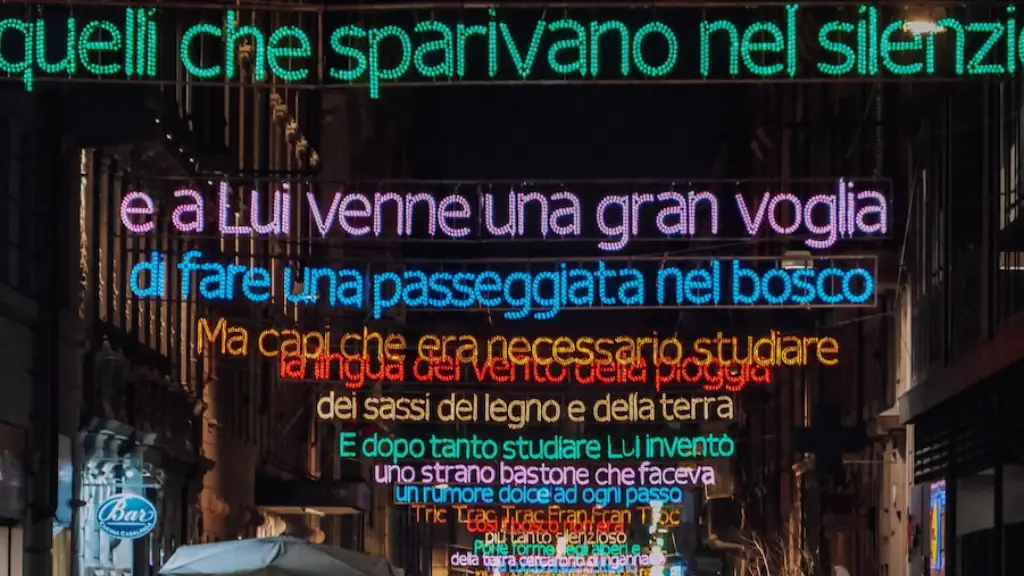Introduction
A metrical foot is the basic unit of a poetic verse. It is composed of two or more syllables that create a pattern of accented and unaccented syllables. Each line of the poem is composed of a specific number of feet, and the feet can be used to form a stanza or pair of lines. This type of structure is called a meter and is what makes poetry such a beautiful art form. Different types of feet can be used to create different rhythms and styles depending on the type of poem. In this article, we will examine some of the most common metrical feet used in poetry and their effects on the overall poem.
What is a Metrical Foot?
A metrical foot is composed of two or more syllables which can be either stressed or unstressed. It gives rhythm and structure to the poem and is the basic building block. It consists of either two syllables or three syllables which are usually combined together to form a pattern. In poetry, each line usually contains a specific number of feet depending on the type of poem and the writer’s style. For example, a line of iambic pentameter (very common in English poetry) would contain five feet.
Types of Feet
The most common types of metrical feet include iambs, trochees, anapests, dactyls, and spondees. Iambs have two syllables, one unstressed and one stressed, and is the most common metrical foot in English poetry. Trochees have two syllables, one stressed followed by one unstressed. Anapests have three syllables, two unstressed followed by one stressed. Dactyls have three syllables, one stressed followed by two unstressed. Lastly, spondees have two syllables, both stressed.
Examples
For example, a line in iambic pentameter would appear as follows: ”Shall I comPARE thee to A SUMmer’s day?”. Each of the five feet in this line is an iamb, with two unstressed syllables in pattern. A line of trochaic tetrameter, would appear as follows: ”Come AWAY, O HUMan CHild!” Here, each of the four feet is a trochee, with one stressed syllable followed by one unstressed syllable. Finally, a line of anapestic tetrameter would appear as follows: ”When TO the SESsions OF sweet silENT THought”. In this line, each of the four feet is an anapest, with two unstressed syllables followed by one stressed syllable.
Effects on Poems
The use of different metrical feet in a poem can help to create different effects, or moods. For example, iambic feet generally create a more upbeat, lively poem, while anapestic feet can create a light, fairy-tale like mood. Different rhythms and patterns can also be used to create different effects. On a more structural level, the use of a fixed meter can create a regularity and emphasis to the poem which would be lost if the meter was not used, while a looser, more free-form meter can create a more free-flowing, imagery-filled poem.
Expert Perspectives
experts often advocate for the use of metrical feet as a way to structure and give order to a poem. According to Dr. Joanne Miller, a professor of poetry and literature at Oxford University, “The use of metrical feet helps to give a poem structure and order, which can in turn help to convey its meaning in a more powerful way.” Literature experts also suggest that metrical feet can help to communicate the poet’s message in a more vivid and sophisticated way.
In their book The Meaning of Poetry, Anna Maria Ramos and John Smith also emphasize the importance of meter, stating, “Meter helps to convey and heighten the emotion of the poem. It provides the anchor that makes possible a poet’s creative vision.” They go on to explain that the rhythm can be used to create a sense of urgency in a poem or to create a dreamlike or surreal atmosphere.
Analysis and Insights
From my perspective, the use of metrical feet is essential to the artistic value of poetry. They serve as the bones of the poem, giving it structure and order that can help to create a unique atmosphere and provide a framework for the poet’s story. Different types of feet can be used to create different effects, from peaceful and tranquil to urgent and intense. It is also important to consider how the structure of the poem is changed by the addition of metrical feet. A poem with a fixed meter can be seen as having a unified structure, while a more free-form poem can be used to convey imagery and emotion in a subtle, yet effective way.
Modern Applications
Modern poets continue to use metrical feet for their poetry. Stanley Kunitz, an American poet, wrote a piece entitled “Taking a Walk” which consists entirely of iambic pentameter. The poem paints a vivid and emotional scene of a person taking a walk through a city, and the use of the steady iambic pentameter helps to convey a sense of freedom and ease.
Similarly, Jane Hirschfield, another American poet, uses anapestic tetrameter in her poem “Evening”. The poem speaks to the sense of peace that comes with the stillness of night and the use of the anapestic tetrameter gives the poem a light and gentle feeling.
Historical Context
Metrical feet have been used in poetry for centuries. Ancient Greek poets were among the first to use them in their work. Homer’s Iliad, for example, uses dactylic hexameter, or a line of six feet each containing one stressed syllable followed by two unstressed syllables. This was the standard form of poetry for Ancient Greek poets, and it was used to great effect to evoke emotion and to give structure to their works.
Similarly, in the Middle Ages, troubadours used metrical feet to create lyrical and romantic poetry. The Troubadour surreals, for example, used a combination of iambs and trochees to create the feeling of a pastoral scene. Metrical feet were also used in the work of Elizabethan writers such as Shakespeare, who frequently used iambic pentameter to give structure to his plays and sonnets.
Conclusion
In conclusion, metrical feet have been used in poetry for centuries and have been used by poets around the world to create different effects and moods. They are an essential part of the structure of a poem and provide a framework for the poet to tell their story. Different types of feet can be used to create different feelings and effects, so understanding the different types and their effects can help to create a successful and impactful poem.



